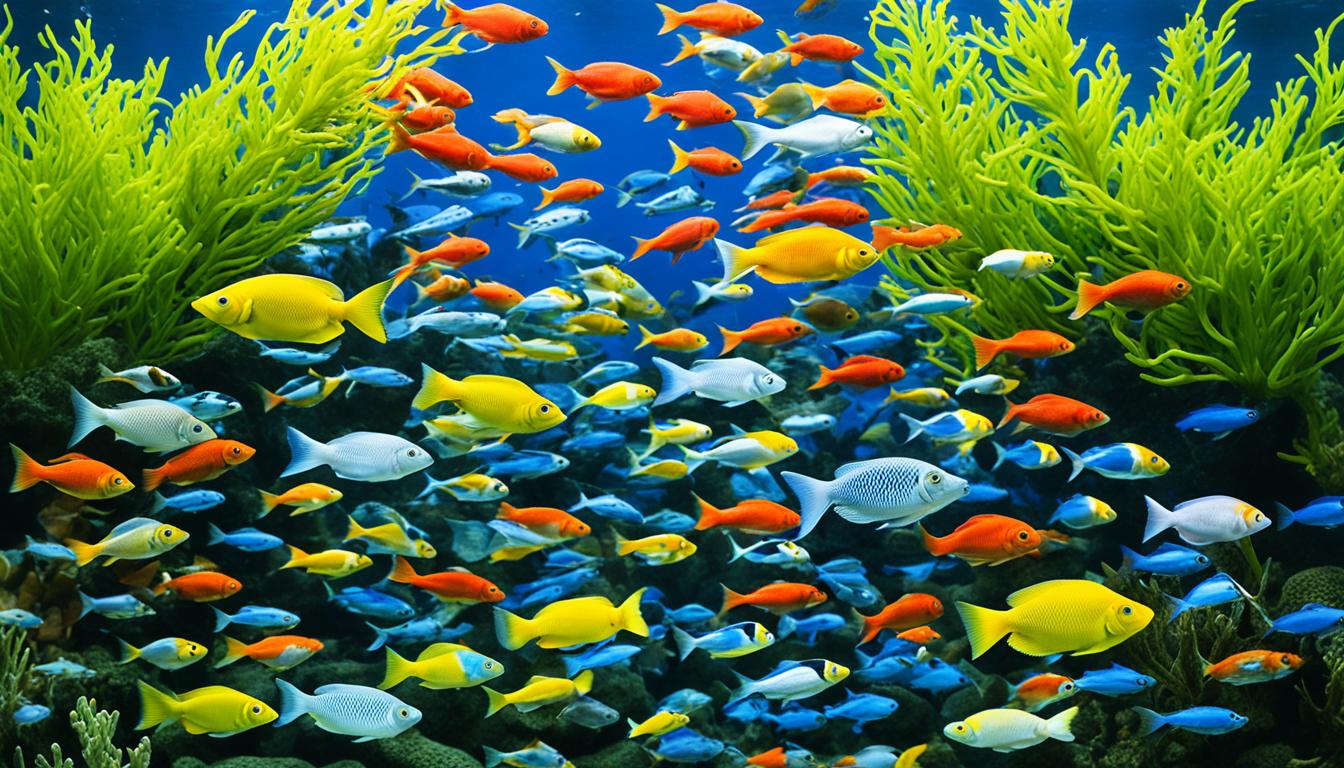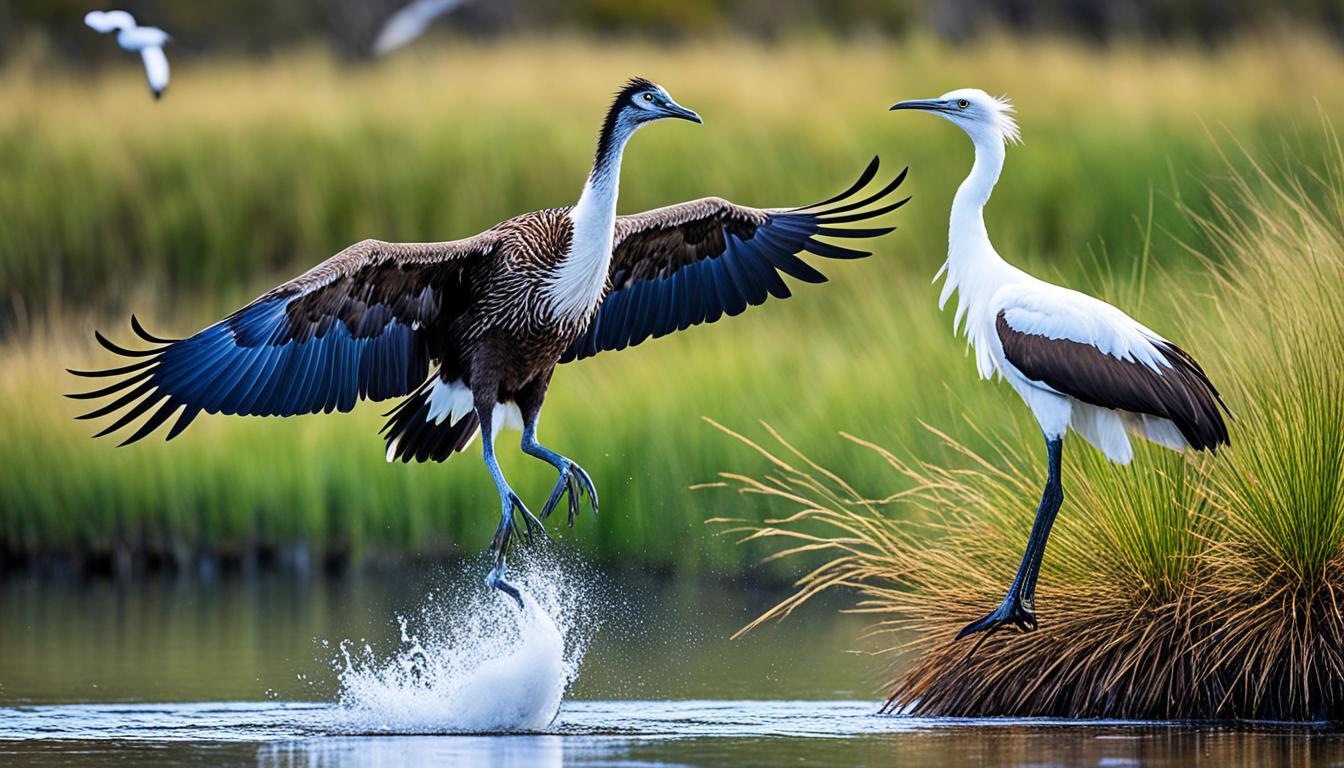Fish are the most diverse group of vertebrates on Earth, with over 34,000 known species. From tiny transparent paedomorphic fish measuring a mere 8 millimeters to massive whale sharks spanning up to 40 feet in length, fish come in a variety of shapes, sizes, and colors. Their adaptability, unique traits, and captivating behaviors make them a fascinating subject to explore.
Key Takeaways:
- Fish are the most diverse group of vertebrates, with over 34,000 known species.
- They come in a wide range of sizes, from tiny transparent fish to massive whale sharks.
- Fish possess unique traits and behaviors that make them intriguing to study.
- Exploring the world of fish opens up a whole new understanding of aquatic ecosystems.
- Understanding fish traits, varieties, and selections is essential for aquarium enthusiasts and conservation efforts.
Characteristics Of Fish
Fish possess a range of unique characteristics that enable them to live successfully in water. Let’s explore some of these fascinating traits:
Aquatic Habitat
Fish are exclusively aquatic creatures, inhabiting various bodies of water such as rivers, lakes, and oceans. They have evolved specific adaptations to thrive in their aquatic environments.
Streamlined Body
Fish have streamlined bodies that are perfectly shaped for efficient movement through water. Their sleek and hydrodynamic shape minimizes resistance, allowing them to swim swiftly and navigate through their surroundings with ease.
Gills for Respiration
Unlike mammals and other land-dwelling creatures, fish do not have lungs. Instead, they have gills, specialized organs that extract oxygen from the water. Gills enable fish to respire and obtain the oxygen necessary for their survival.
Cold-Blooded
One distinguishing characteristic of fish is that they are cold-blooded, which means their body temperature varies with the temperature of their surroundings. Their metabolic rate and bodily functions are influenced by the temperature of the water they inhabit.
Fins for Locomotion
Fish have fins that play a crucial role in their locomotion. These appendages help them maneuver through the water, change direction, maintain balance, and achieve propulsion. Different types of fins serve distinct purposes, allowing fish to adapt to various swimming styles and habitats.
Scales
Scales are a prominent feature of fish, serving as a protective layer for their bodies. Scales not only provide defense against external threats but also assist in maintaining their internal water balance and regulating body temperature.
Swim Bladder
Many fish possess a specialized organ called a swim bladder, which helps them control their buoyancy. By adjusting the air or gas content in the swim bladder, fish can either ascend or descend in the water column, effectively controlling their depth within the water.
Reproduction by Eggs
Fish reproduce by laying eggs, a characteristic feature of their life cycle. The reproductive strategy and behavior of fish vary greatly across species, with some laying thousands of eggs at once, while others exhibit complex courtship rituals to ensure successful fertilization.
Wide Diversity
Fish exhibit an incredible diversity in terms of species, sizes, shapes, colors, and ecological adaptations. From the smallest goby to the massive whale shark, fish have evolved to occupy a wide range of niches in aquatic ecosystems.
Eyesight
Fish possess excellent eyesight, allowing them to navigate their surroundings, find food, and detect potential threats. Some species even have specialized adaptations to see in low light conditions or perceive colors in their environment.
Ectothermic Metabolism
Fish are ectothermic animals, meaning their body temperature is regulated by the surrounding environment. As a result, their metabolic rate and overall activity levels are influenced by the temperature of the water they inhabit.
Diverse Feeding Strategies
Fish employ various feeding strategies based on their ecological niche and available food sources. They may be herbivorous, carnivorous, omnivorous, filter feeders, scavengers, or even specialized feeders with unique adaptations to capture prey.
Vertebrate
As vertebrates, fish possess a backbone or spinal column, which provides structural support and protection for their internal organs. This characteristic distinguishes them from invertebrates and is a defining feature of the phylum Chordata to which fish belong.
These are just some of the remarkable characteristics that make fish a diverse and fascinating group of creatures.
Types Of Fish
Fish are classified into three main types: jawless fish (Agnatha), cartilaginous fish (Chondrichthyes), and bony fish (Osteichthyes). Each type of fish has its own unique characteristics and adaptations that allow them to thrive in their respective environments.
Jawless fish (Agnatha)
Jawless fish, such as lampreys and hagfish, are characterized by their lack of jaws. They have long, cylindrical bodies and are typically found in freshwater and marine environments.
Cartilaginous fish (Chondrichthyes)
Cartilaginous fish, including sharks and rays, have skeletons made of cartilage instead of bone. They have streamlined bodies and powerful jaws, making them efficient hunters in the ocean. Cartilaginous fish are mostly marine species, although some can be found in freshwater habitats.
Bony fish (Osteichthyes)
Bony fish make up the majority of fish species. They have skeletons composed of bone and are the most diverse group of fish. Bony fish inhabit a wide range of habitats, including freshwater rivers, lakes, and the ocean. They exhibit a wide variety of body shapes and sizes, with adaptations that enable them to survive in different ecological niches.
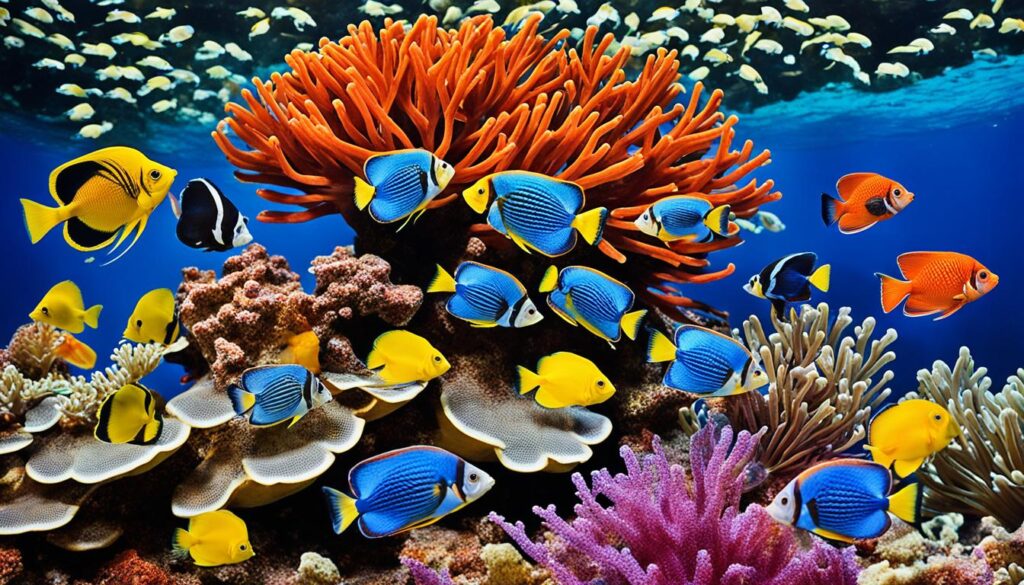
Different Types Of Fish:
The world of fish is incredibly diverse, with numerous species that inhabit various ecosystems. Each type of fish has its own fascinating characteristics and qualities. Let’s dive into some of the most interesting types:
Anglerfish: The Deep-sea Lurkers
Anglerfish are known for their unique method of hunting. They have a bioluminescent lure that attracts prey in the dark depths of the ocean. These mysterious creatures have adapted to survive in extreme conditions and are fascinating to observe.
Betta Fish: The Colorful Fighters
Betta fish, also known as Siamese fighting fish, are popular for their vibrant colors and elaborate fins. They are known for their aggressive behavior and are best kept alone or in carefully selected community tanks.
Clownfish: The Reef Dwellers
Clownfish are famous for their symbiotic relationship with anemones. They live among the tentacles of these marine creatures, finding protection from predators while providing food and cleaning services in return.
Catfish: The Bottom Dwellers
Catfish are bottom-dwelling scavengers that play an essential role in maintaining the cleanliness of aquatic ecosystems. They have specialized barbels and are skilled at finding food in the substrate.
Carp: The Hardy Swimmers
Carp are hardy fish species that are adaptable to various environments. They are cherished by anglers for their strength and fighting spirit. Carp are also commonly bred in aquaculture due to their fast growth and ability to thrive in different conditions.
Goldfish: The Classic Tank Dwellers
Goldfish are classic aquarium fish that have been kept for centuries. They come in various colors and wondrous tail shapes. Known for their beauty and longevity, goldfish are a popular choice for both beginners and experienced aquarists.
Guppy: The Vibrant Community Fish
Guppies are small, colorful fish often kept in community tanks. They are known for their lively behavior and striking patterns. Guppies are relatively easy to care for, making them a favorite among hobbyists.
Tuna: The Swift Ocean Wanderers
Tuna are highly migratory fish that inhabit the open ocean. Renowned for their speed and endurance, tuna undertake long-distance journeys in search of food. These agile swimmers are prized for their commercial and recreational value.
Salmon: The Upstream Navigators
Salmon are anadromous fish, meaning they migrate from the ocean to freshwater rivers to spawn. They possess incredible navigational skills, returning to their birthplace against all odds. Salmon are crucial to the ecosystems they inhabit and are valued for their meat.
Pufferfish: The Inflatable Defenders
Pufferfish have a remarkable ability to inflate themselves when threatened, deterring potential predators. They have a spiky appearance and toxic flesh, making them unappealing to most predators. Pufferfish are fascinating to observe but require specialized care due to their unique needs.
Swordfish: The Oceanic Gladiators
Swordfish are large, predatory fish with long, bill-like snouts. Their distinctive shape and powerful swimming abilities make them formidable hunters in the open ocean. Swordfish are known for their speed and agility, often leaping out of the water in pursuit of prey.
Marlin: The High-speed Hunters
Marlin are some of the fastest fish in the ocean, capable of reaching incredible speeds. They are known for their iconic bill and stunning colors. Marlin are prized targets for sport fishing enthusiasts due to their strength and acrobatic displays.
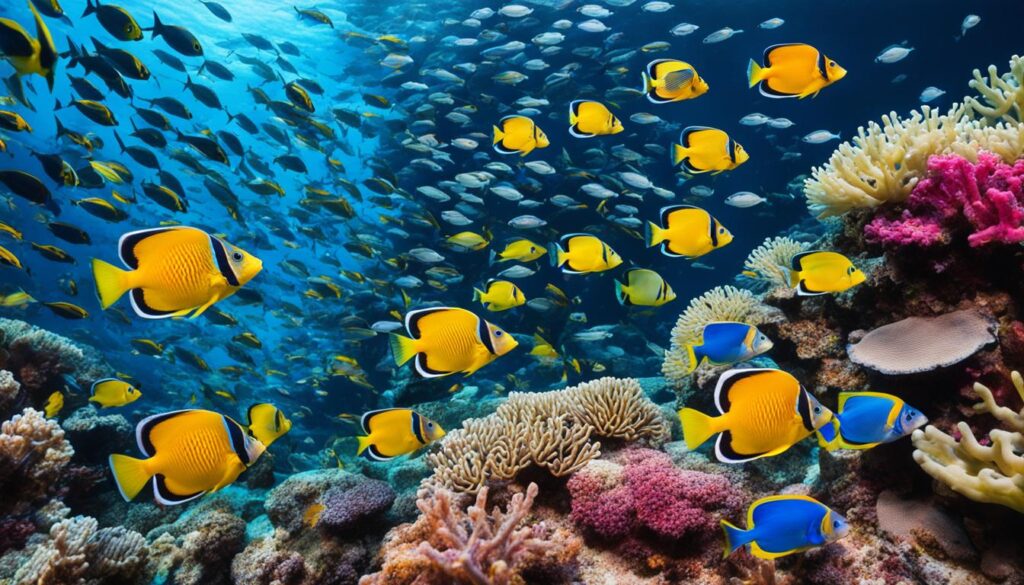
Stingray: The Graceful Ocean Skaters
Stingrays are graceful creatures that glide through the ocean, using their pectoral fins to propel themselves. They have a unique flattened body shape and can often be found resting on the sandy ocean floor. Stingrays are mesmerizing to watch and are a popular attraction in aquariums.
Lionfish: The Striking Predators
Lionfish are known for their striking appearance, with colorful stripes and venomous spines. They are predatory fish that feed on smaller fish and invertebrates. Lionfish have become invasive species in some regions, causing concern for native marine life.
Moorish Idol: The Exotic Beauties
Moorish idols are stunning reef fish often admired for their vibrant colors and elaborate fin patterns. They are delicate and require specific water conditions to thrive. Moorish idols are highly sought after by reef aquarium enthusiasts.
Piranha: The Feisty Hunters
Piranhas are notorious for their sharp teeth and aggressive feeding behavior. They are ferocious hunters that can strip prey down to the bone in a matter of minutes. Piranhas inhabit freshwater rivers and are a subject of fascination for many.
Trout: The Stream Champions
Trout are freshwater fish that thrive in streams and rivers. They are known for their excellent swimming abilities and are a popular target for anglers. Trout species vary in size, habitat preferences, and stunning coloration.
Sunfish (Mola): The Gentle Giants
Sunfish, also known as Mola, are the largest bony fish in the world. They have a unique appearance, with a tall dorsal fin and a flattened body. Sunfish are gentle creatures that feed on jellyfish and are often seen basking at the ocean surface.
Eel: The Sly Ambushers
Eels are secretive and nocturnal fish that prefer to hide in crevices and ambush their prey. They have a slimy body and can dart quickly through small openings. Eels are fascinating to observe but require specific care due to their specialized needs.
Bass: The Agile Ambushers
Bass are predatory fish known for their aggressive nature and impressive speed. They are skilled ambush hunters, lying in wait for their prey. Bass are popular targets for both recreational and competitive fishing due to their fighting abilities.
Threats And Conservation Of Fish
Fish face numerous threats to their survival, many of which are caused by human activities. Overfishing, where the fish population is harvested at a rate faster than it can reproduce, is a significant threat to fish species and leads to declines in populations. Habitat destruction, such as the destruction of coral reefs and deforestation of riverbanks, can disrupt fish habitats and reduce their available resources. Pollution, from sources such as agricultural runoff and industrial waste, can have detrimental effects on fish populations and the overall health of aquatic ecosystems. Climate change, including rising temperatures and ocean acidification, can impact fish physiology and their ability to survive. Invasive species, when introduced into new environments, can outcompete native species and disrupt ecological balance.
Conservation efforts aim to mitigate these threats and protect fish populations and their habitats. Sustainable fishing practices, habitat restoration, and pollution reduction are some of the strategies employed to conserve fish species and ensure their long-term survival.

| Threats to Fish | Conservation Strategies |
|---|---|
| Overfishing | Sustainable fishing practices, such as implementing catch limits and fishing quotas, to prevent the depletion of fish populations. |
| Habitat destruction | Habitat restoration projects, such as reef rehabilitation and reforestation of riverbanks, to restore fish habitats and improve their resilience. |
| Pollution | Efforts to reduce pollution sources, such as implementing better waste management systems and promoting eco-friendly agricultural practices, to minimize the impact on fish populations and aquatic ecosystems. |
| Climate change | Adaptation and mitigation measures, such as creating marine protected areas and reducing greenhouse gas emissions, to address the effects of climate change on fish habitats and populations. |
| Invasive species | Prevention and control programs, including strict biosecurity measures and monitoring systems, to prevent the introduction and spread of invasive species that can harm native fish populations. |
What Are the Common Traits of Fish?
Fish possess a range of common traits that are crucial for their survival and ecological role. Understanding fish anatomy, from their fins to gills, helps us comprehend their unique adaptations and behaviors. Fish exhibit a tremendous diversity of species, ranging from bony fish, which make up the majority, to cartilaginous fish like sharks and rays. This diversity is essential for maintaining healthy aquatic ecosystems, as fish play vital roles in nutrient cycling, predation, and maintaining ecological balance.
Understanding Fish Anatomy: From Fins to Gills
Fish anatomy is adapted to their life in water. Let’s explore some of the key anatomical features of fish:
- Fins: Fish have various types of fins, such as the dorsal, caudal, pectoral, and pelvic fins. These fins enable fish to swim, change direction, and maintain balance in the water.
- Gills: Gills are specialized organs that fish use to extract oxygen from the water and remove carbon dioxide. Through a process called respiration, the gills allow fish to breathe and obtain the oxygen they need to survive.
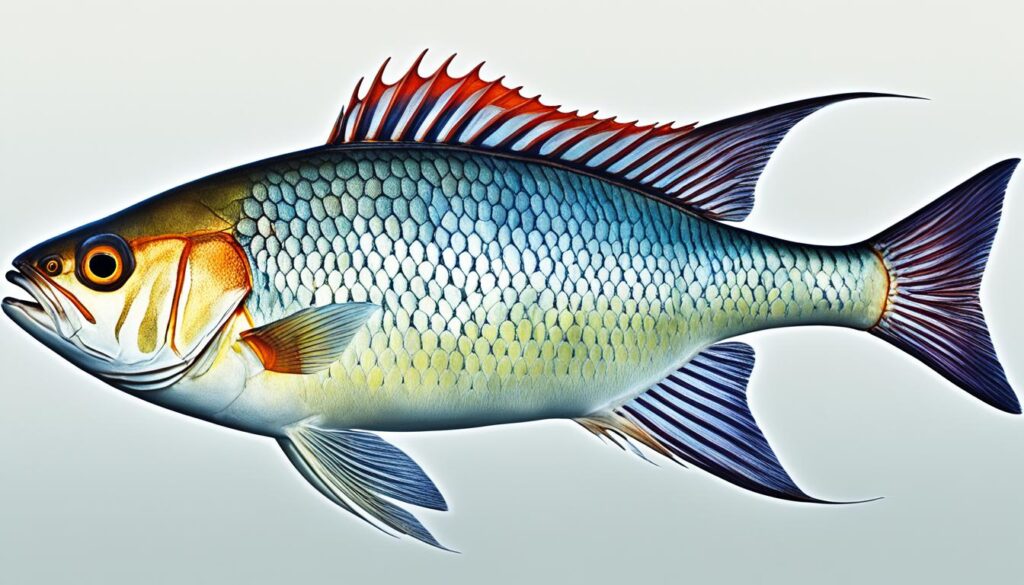
Diversity in Fish Species: From Bony to Cartilaginous Fish
The world of fish is incredibly diverse, with a wide range of species. Here are two major groups of fish:
- Bony fish: Bony fish, also known as osteichthyans, have skeletons made of bone. They are the most common type of fish and include familiar species like salmon, trout, and goldfish.
- Cartilaginous fish: Cartilaginous fish, such as sharks and rays, have skeletons made of cartilage. They are known for their unique adaptations and predatory nature.
The Importance of Fish in Aquatic Ecosystems
Fish play a crucial role in maintaining the health and balance of aquatic ecosystems. Here are some of the reasons why fish are important:
- Nutrient cycling: Fish help recycle nutrients in the water by consuming organic matter and excreting waste, which nourishes other organisms.
- Predation: Fish serve as predators, controlling populations of other organisms and maintaining ecological balance.
- Ecological balance: Fish interactions with other species, such as their role as prey or competitors, help maintain the stability and diversity of aquatic ecosystems.
Therefore, fish are not only fascinating creatures but also key players in the intricate web of life in our oceans, rivers, and lakes.
How Can You Select the Right Fish for Your Aquarium?
When it comes to selecting fish for your aquarium, making the right choices is essential for the well-being and compatibility of the fish. There are several factors to consider that can help you create a harmonious and thriving aquatic environment.
First, think about the size of your fish tank. Different fish species have varying space requirements, so it’s important to choose fish that will comfortably fit in your aquarium. Overcrowding can lead to stress, aggression, and poor water quality, so ensure you select fish that can coexist peacefully.
Next, research the specific requirements of the fish species you’re interested in. Fish have diverse needs when it comes to water temperature, pH levels, and filtration. Understanding these requirements will enable you to provide an environment that promotes their health and well-being.
Consider the compatibility of different fish species. Some fish may have aggressive tendencies or specific territorial needs, while others are more peaceful and sociable. It’s essential to select fish that can cohabitate without causing harm to one another.
Lastly, pay attention to the size and dietary needs of the fish you’re considering. Fish vary in size, and some species can outgrow smaller aquariums. Additionally, different fish have specific feeding requirements, so make sure you choose fish that can be easily fed with the available food options.
By taking into account factors such as fish tank size, species requirements, compatibility, and feeding needs, you can select the right fish for your aquarium. Creating a suitable environment with proper water parameters and filtration will contribute to the long-term health and happiness of your fish.
